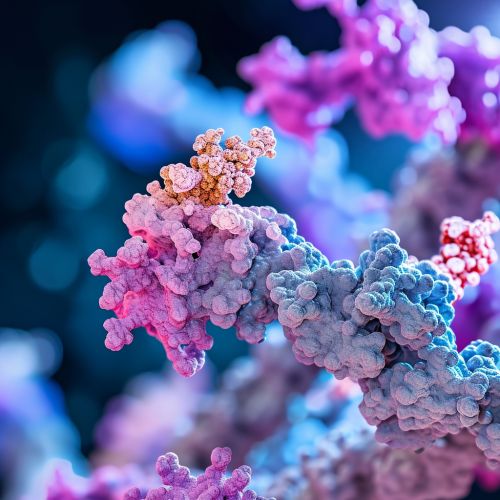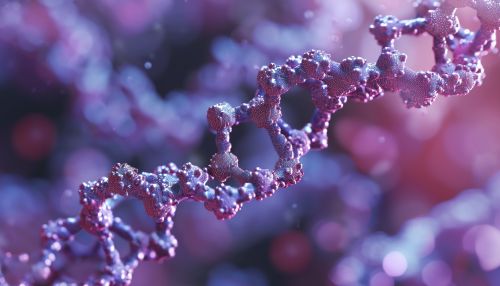Signal transducer and activator of transcription
Overview
The Signal transducer and activator of transcription (STAT) is a family of cytoplasmic proteins that are involved in relaying signals from the cell surface to the nucleus, resulting in changes in gene expression. These proteins play a crucial role in many cellular processes, including cell growth, differentiation, and apoptosis. The STAT family consists of seven members: STAT1, STAT2, STAT3, STAT4, STAT5A, STAT5B, and STAT6. Each of these members has unique and overlapping functions, and their dysregulation is often associated with various diseases, including cancer, autoimmune disorders, and developmental abnormalities.


Structure
The structure of STAT proteins is highly conserved and consists of several distinct domains. The N-terminal domain is involved in protein-protein interactions and is necessary for the formation of STAT dimers. The coiled-coil domain is involved in receptor binding and contains a nuclear localization signal. The DNA-binding domain recognizes and binds to specific DNA sequences in the promoter regions of target genes. The linker domain connects the DNA-binding domain to the SH2 domain and is crucial for the stability of the protein. The SH2 domain is involved in protein-protein interactions and is necessary for the dimerization of STAT proteins. The transactivation domain is located at the C-terminus of the protein and is responsible for the activation of gene transcription.
Activation
STAT proteins are activated by a variety of signals, including cytokines, growth factors, and hormones. The activation process begins when these signals bind to their respective cell surface receptors, leading to the activation of receptor-associated Janus kinases (JAKs). The activated JAKs then phosphorylate specific tyrosine residues on the intracellular portion of the receptor, creating docking sites for the SH2 domains of STAT proteins. Once bound to the receptor, the STAT proteins are phosphorylated by JAKs, leading to their dimerization and translocation to the nucleus, where they bind to specific DNA sequences and activate gene transcription.
Function
The primary function of STAT proteins is to relay signals from the cell surface to the nucleus, leading to changes in gene expression. These changes in gene expression can result in a variety of cellular responses, including cell growth, differentiation, apoptosis, and immune response. For example, STAT1 is primarily involved in mediating immune responses, while STAT3 and STAT5 are involved in promoting cell growth and survival. STAT4 is involved in the development of T helper cells, and STAT6 is crucial for the differentiation of T helper 2 cells.
Dysregulation and Disease
Dysregulation of STAT signaling is often associated with various diseases. For example, constitutive activation of STAT3 and STAT5 is frequently observed in various types of cancer, including breast cancer, lung cancer, and leukemia. This constitutive activation can result in uncontrolled cell growth and survival, leading to tumor development and progression. In addition, mutations in STAT1 and STAT3 have been associated with various autoimmune disorders, including systemic lupus erythematosus and rheumatoid arthritis. Dysregulation of STAT4 and STAT6 has been linked to various allergic and inflammatory diseases.
Therapeutic Targeting
Given the crucial role of STAT proteins in various diseases, they have emerged as potential therapeutic targets. Several strategies have been developed to inhibit STAT signaling, including small molecule inhibitors, peptides, and antisense oligonucleotides. These inhibitors can block the activation of STAT proteins, prevent their dimerization, or inhibit their DNA-binding activity. Several of these inhibitors are currently being tested in preclinical and clinical trials for the treatment of various diseases, including cancer and autoimmune disorders.
